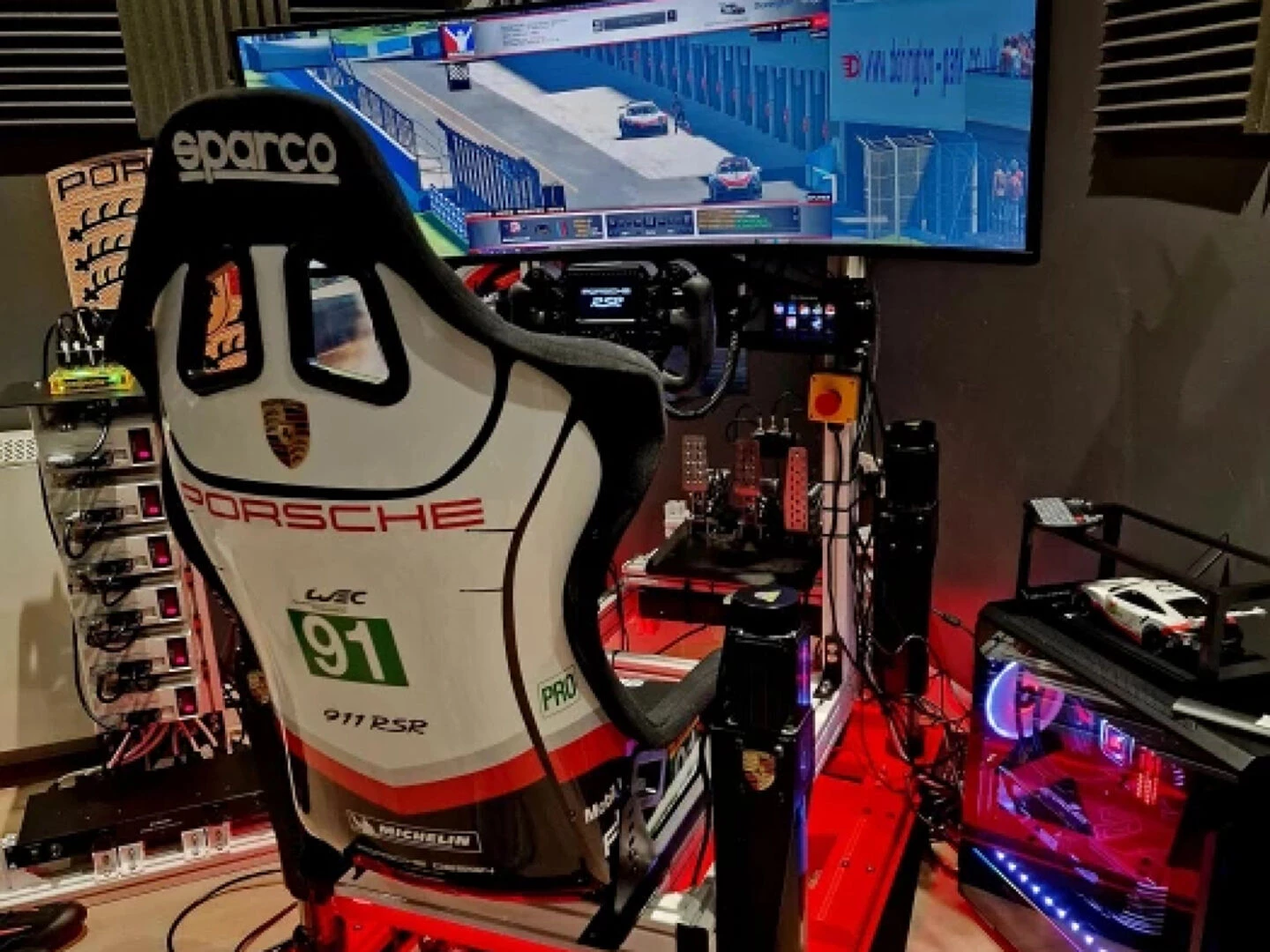Raising the Bar on Motion Rigs
When a motion simulator rig moves beneath you, the sensation is uncanny. No longer limited to visual cues on screen, your body feels acceleration, cornering and braking forces with striking fidelity. These rigs, especially those offering six degrees of freedom, replicate surge, sway, heave, pitch, roll and yaw in real time, simulating the physics of a racing car.
For well-informed enthusiasts, this transforms a home sim racing rig into a near-real cockpit experience. It is this fine blending of motion simulator immersion and hardcore physics that elevates a setup from high-end gaming to genuine training platform status.
Engineering the Motion Platform
The technology behind a motion platform sim racing system is highly technical yet fascinating. Actuators, electric or hydraulic, control precise movements, often with sub-millimetre accuracy. Some rigs utilise Stewart platforms, a type of parallel manipulator that has six prismatic actuators, attached in pairs, which are extensively used in flight simulators. Others like Race@Home's Lowslider platform adopt bespoke actuator arrangements.
High-end systems also integrate motion compensation for VR, synchronising head-mounted displays with rig movement to reduce nausea. Choosing a rig entails understanding payload capacities, response latency, range of movement and integration with peripherals such as a direct-drive steering wheel and load-cell pedals. Each factor influences the overall quality of immersion.
Design Considerations for Your Setup
Selecting the right home racing simulator rig means balancing space, budget and ambition. A simple motion rig setup might feature two-axis movement to add pitch and roll to a cockpit. Advancing to a six-axis or 6DOF motion simulator rig introduces realistic heave and sway, but demands structural stiffness, amplified cost and significant power.
Placement matters too. The room should accommodate full-motion travel without obstruction. The rig must sit on a stable floor and require robust mounting for wheels, pedals and screens. Builders often align with modular motion simulator accessories to facilitate future upgrades, thereby preventing obsolescence as new actuators or cockpit designs emerge.
The Physical Experience for Racers
Racing with motion is not merely visceral entertainment but a physical workout. Users report they must brace their core and leg muscles during heavy braking or cornering. Ergonomic research indicates that prolonged sessions engage the shoulders, arms, and lower back, simulating real race conditions. Yet motion compensation, VR synchronisation and ergonomically tuned seats ensure drivers can focus on precision driving without discomfort.
Anecdotal feedback from virtual racers emphasises how a quality motion racing cockpit can improve reaction times and spatial awareness over time. That kinesthetic feedback, delivered via a motion platform, helps train instincts just as effectively as time behind the wheel of a real car.
Physical Feedback Transforms Mental Focus
Beyond the sensory thrill, motion feedback has profound effects on cognitive engagement. When your vestibular system starts receiving inputs that align with visual cues, your brain responds differently. Focus sharpens. Reaction times improve. Muscle memory begins to develop in a way that doesn't happen with a static setup.
For pilots, this can translate into better preparedness for managing G-force and maintaining spatial orientation. For racers, it provides tactile cues for understeer, oversteer and brake lock-up, allowing them to correct errors instinctively. Competitive sim drivers who train with motion platforms often report improved lap consistency and a greater ability to sustain concentration. It's not just about how the rig moves you, but how it tunes your body to the simulation. Physicality becomes a teacher, not just a sensation.
Is It Worth the Investment?
Motion rigs remain a premium investment, with entry points ranging from the low thousands to fully immersive, multi-actuator systems that cost tens of thousands. Yet early adopters argue that the authenticity gained far outweighs the expense. Unlike static setups, a motion rig encourages sustained use due to its engaging nature.
Enthusiasts cite improved lap times in simulators like the Race@Home Lowslider, due to the realistic feedback provided by motion platforms. For sim racers seeking ultimate realism, a motion simulator rig is not a gimmick but an evolutionary leap. As hardware becomes more accessible and software more refined, these rigs are steadily transitioning from high-end novelties to serious tools for both training and entertainment.
Choosing the Right System for You
Finding the perfect motion simulator rig requires careful evaluation of needs, space and goals. Flight simulation often benefits from higher vertical movement and rotation, while racing sims require responsive lateral feedback and quick heave. The ideal rig will offer a balance of range, speed and subtlety.
High-quality motion cues are nuanced, not exaggerated. Overblown motion might be thrilling for a minute, but quickly becomes fatiguing and uninformative. It's worth considering ergonomics. The best platforms allow seat adjustments, monitor mounting and pedal positioning that align with your discipline. Above all, it should feel natural. The goal is to forget you're in a simulator at all.
About Us
Race@home launched in 2020, offering immediate shipment of high-end sim hardware to frustrated customers. Our acclaimed LowRider 5DOF and new LowSlider 6DOF platforms prioritise compact excellence.
Contact Us
raceathome@gmail.com
+441163326679
Leicester, United Kingdom
WhatsApp
Instagram

